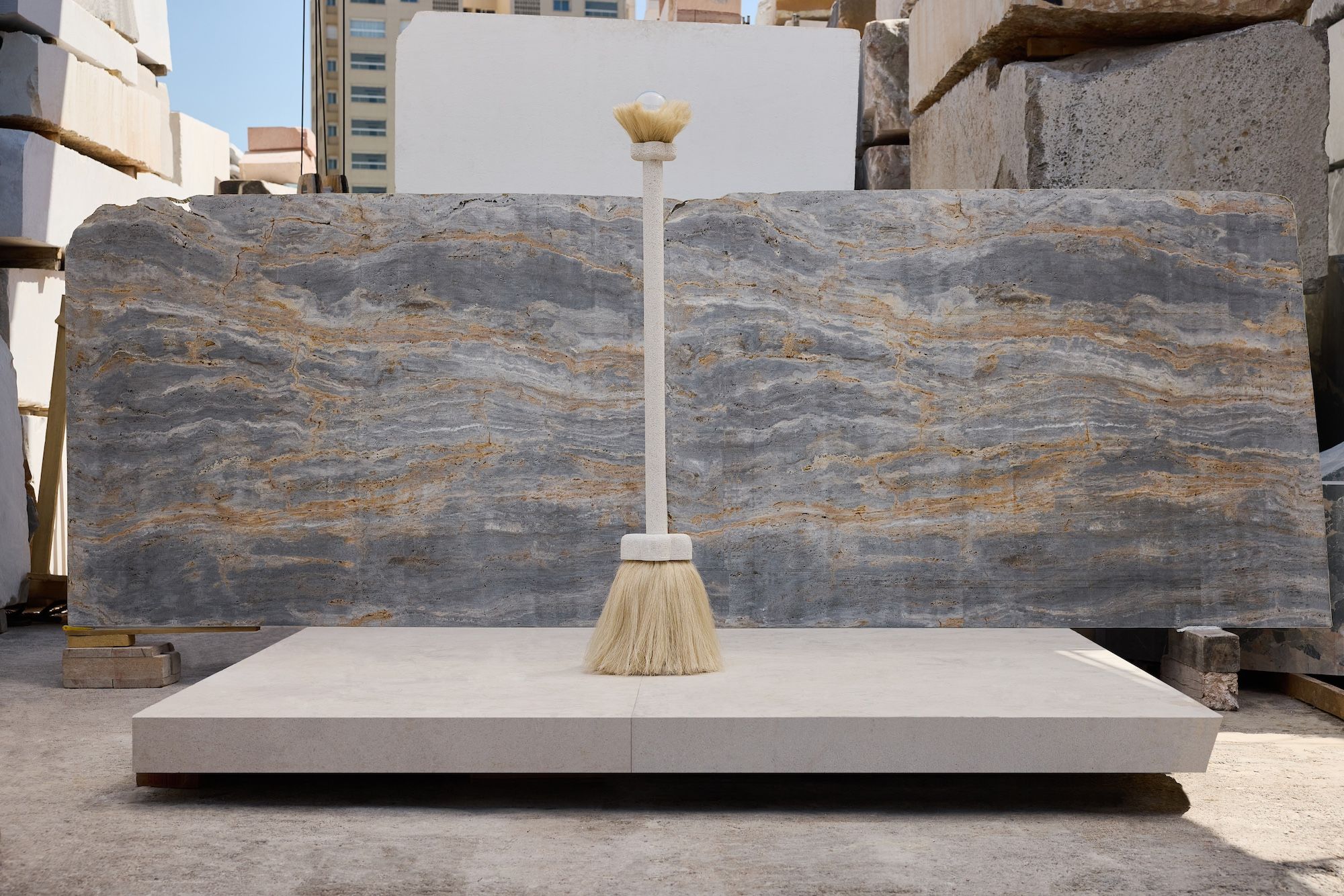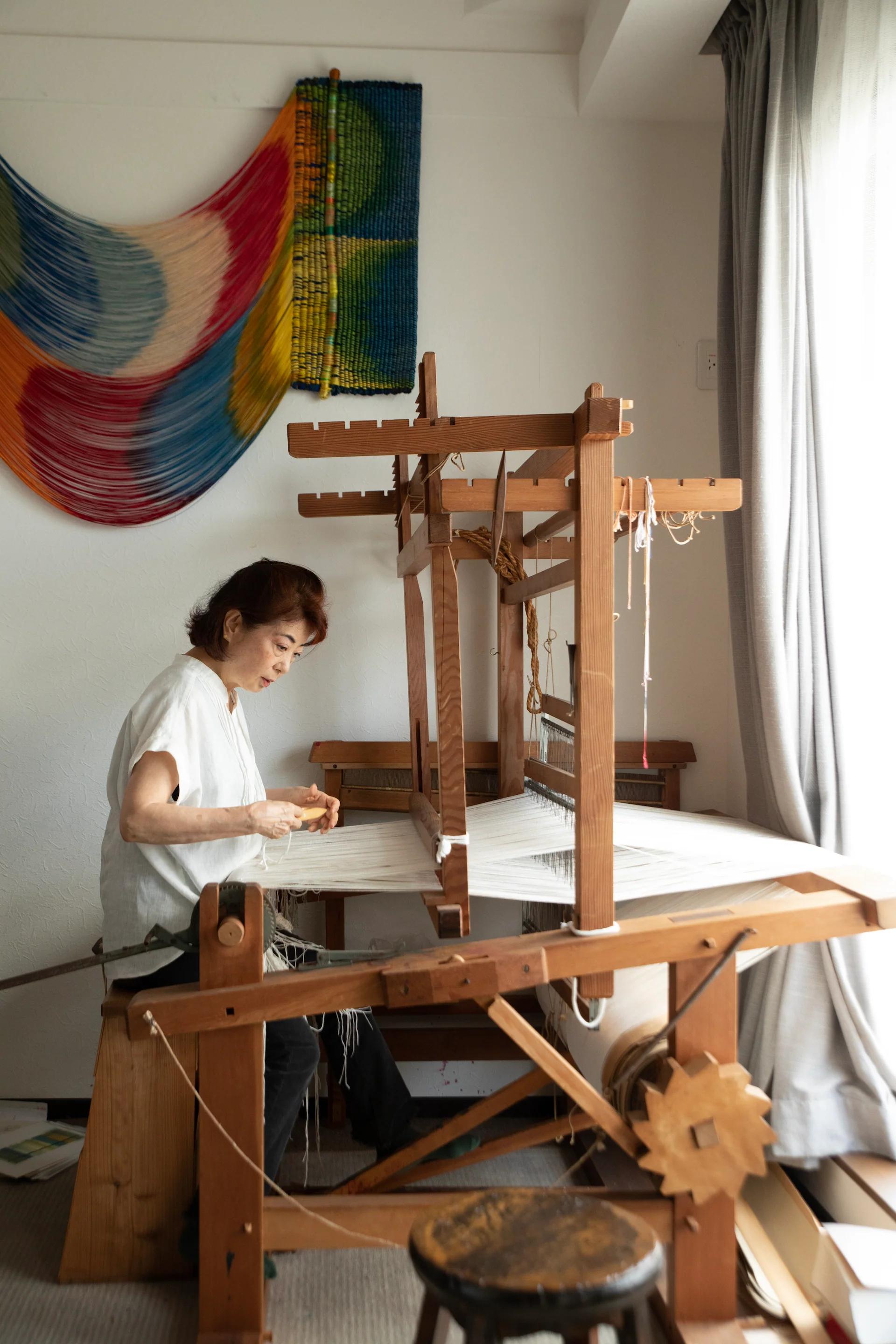HOW TO MAKE IT JUNE 28 2022
by Wava Carpenter
Norman Teague takes on the canon for your wonder, delight, and edification
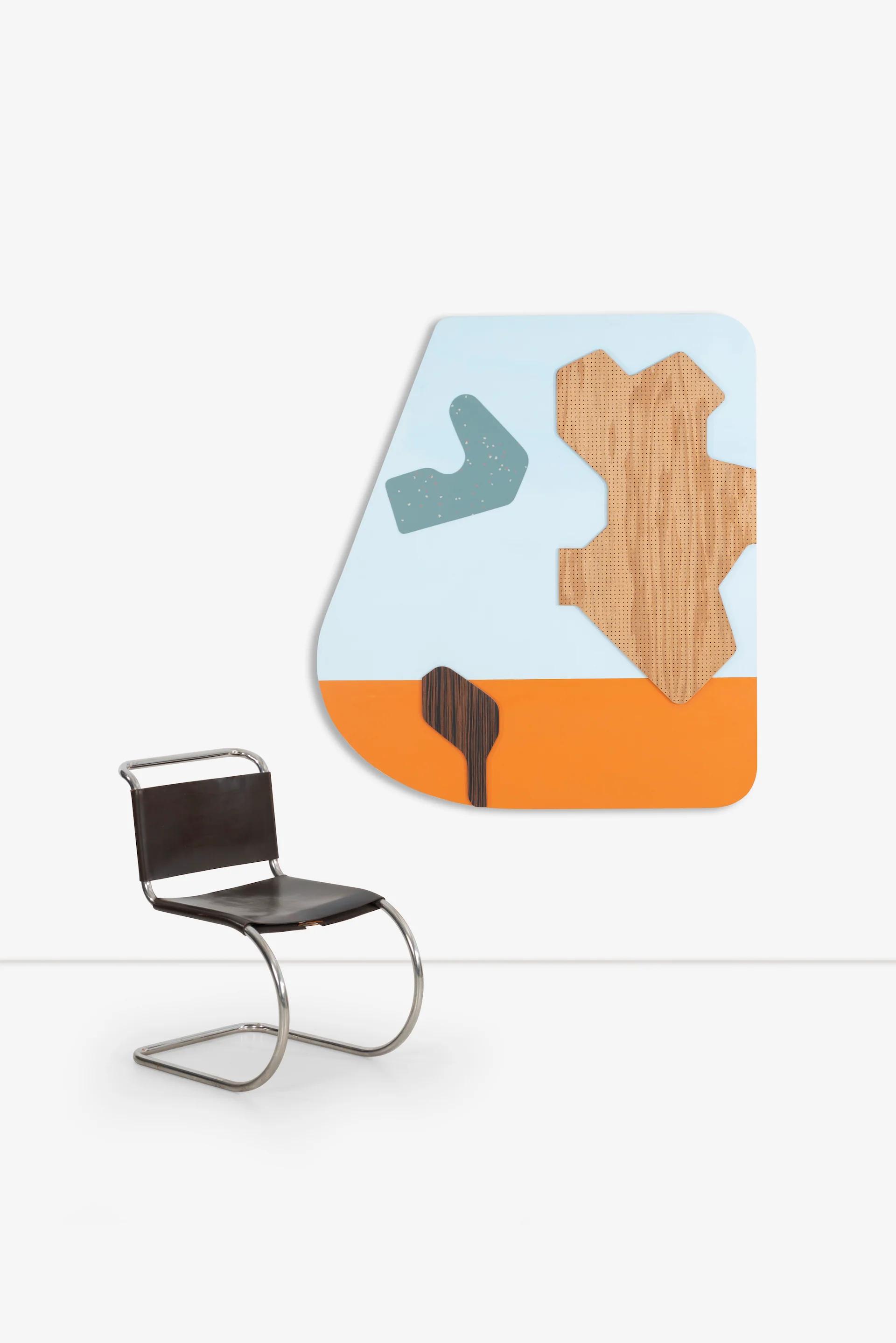
NORMAN TEAGUE/ SCRAP UTOPIA 1, 2022, HUNG ALONGSIDE A CLASSIC MIES VAN DER ROHE CHAIR
Photo © CONVERSO
“The design canon, for me, if done properly, becomes a place of holdings,” Norman Teague offers when asked about the concept behind his solo exhibition, Bureaus of Reconstruction, currently on view at CONVERSO. The Chicago-based designer and educator has been challenging the incomplete “holdings” of the canon ever since he was a student and couldn’t help but notice the absence of people of color from the most widely recounted stories of design history. Teague’s latest project for CONVERSO continues his ongoing mission to correct the record by injecting new perspectives into the design conversation while also harnessing his practice to expand opportunities for budding Black and Brown creatives today.
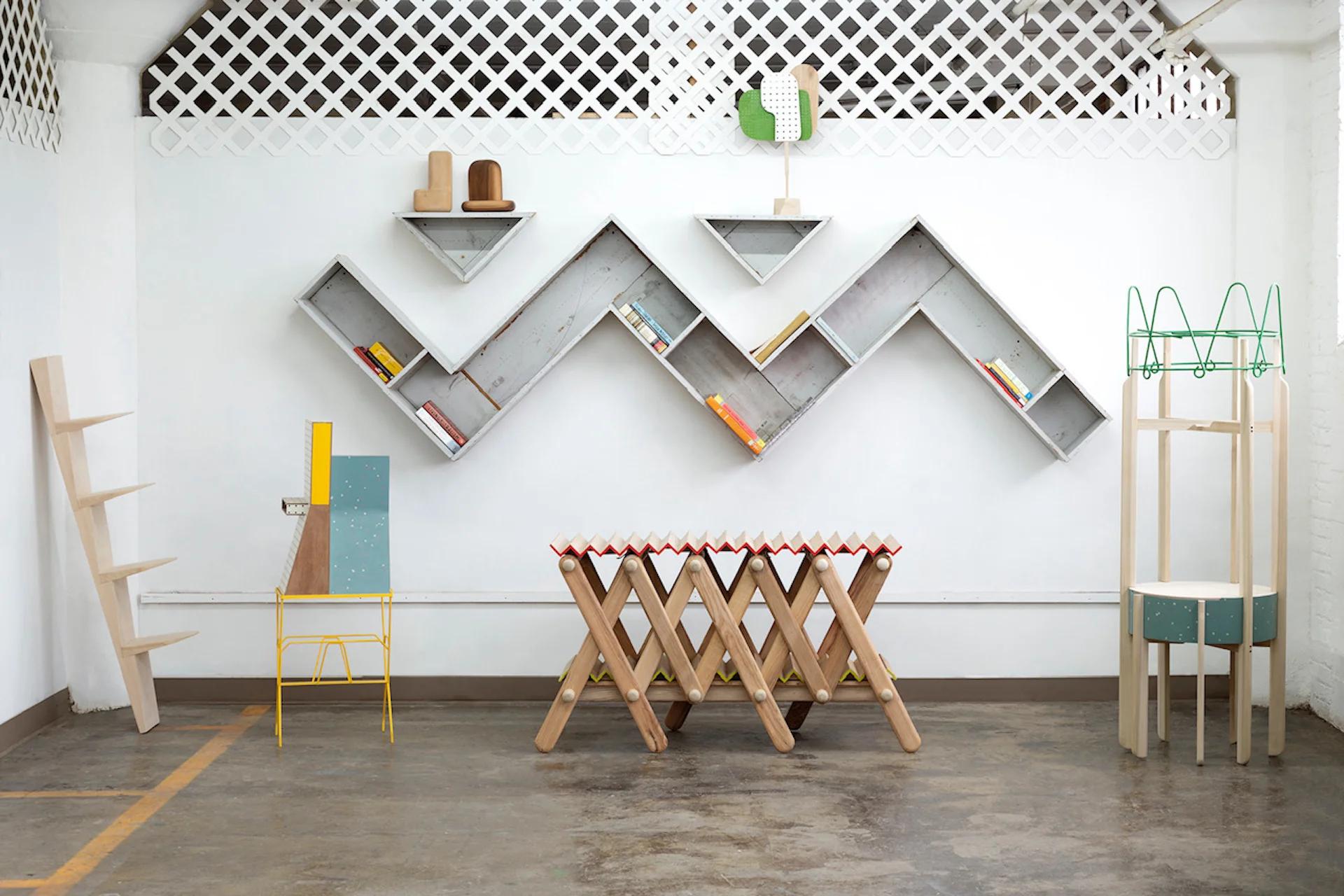
NORMAN TEAGUE/ BUREAUS OF RECONSTRUCTION AT CONVERSO IN CHICAGO
Photo © CONVERSO
“I saw this exhibition as an opportunity to place myself into the design history that we as African American were so systematically written out of,” Teague explains. “My design and craft allow my voice to take part in a larger discussion—to speculate on what the design industry might have looked like had I been there with a free will to interject and how a piece of furniture might take shape in ways that direct a future designer to be free to do the same.”

NORMAN TEAGUE, FOUNDER OF NORMAN TEAGUE DESIGN STUDIO AND ASSISTANT PROFESSOR AT THE SCHOOL OF DESIGN, UNIVERSITY OF ILLINOIS AT CHICAGO.
Photo courtesy of Norman Teague
The title of the show references an important initiative of the Reconstruction era following the Civil War. For seven years starting in 1865, the Bureau of Refugees, Freedmen, and Abandoned Lands, or The Freedmen’s Bureau, aimed to help formerly enslaved people become self-sufficient by redistributing confiscated Confederate lands, issuing rations, operating hospitals and refugee camps, facilitating the establishment of schools, supervising labor contracts, protecting voting rights, and more.
“They also helped trace, transport, and reunite formerly enslaved families and performed official marriages—something denied throughout the long history of slavery,” Michael Graham of CONVERSO adds. “The Bureau tried to think through in a very practical way what material conditions would be necessary for a formerly enslaved Black population, often with nothing but the clothes on their backs, to function in a democratic society. It represented the last good faith effort of American society to address the needs of the formerly enslaved population for a hundred years, until the modern Civil Rights movement.”
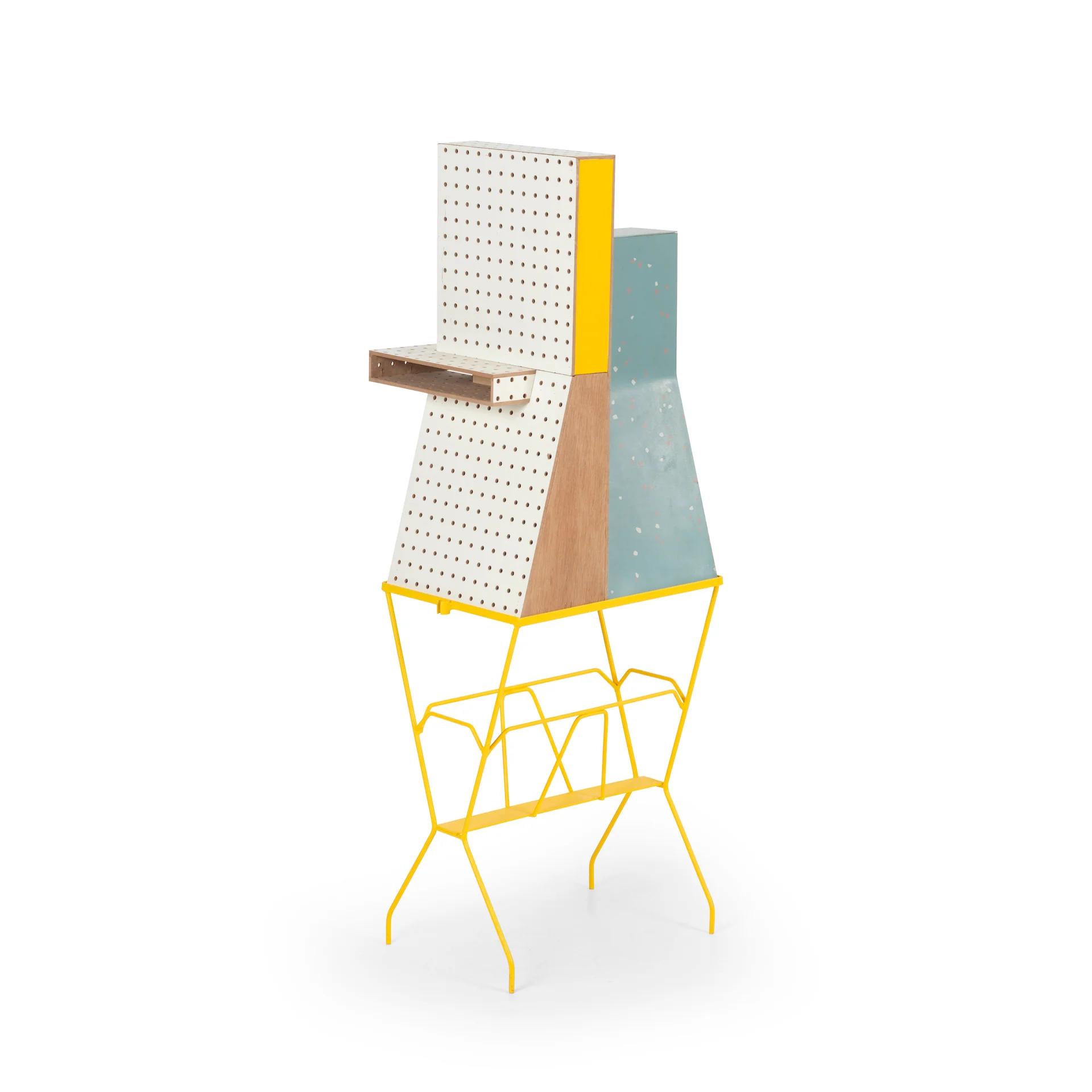
NORMAN TEAGUE/ STANZA 1, 2022, COLLAGED FROM FURNITURE FRAGMENTS FOUND IN THE SPIEGEL CATALOG BUILDING ON CHICAGO'S SOUTH SIDE.
Photo © CONVERSO
Like many of Teague’s projects, the Bureaus of Reconstruction mines the material culture of a moment in history and its overlooked intersection with Black lived experiences in America. To create some of the objects included in the exhibition, he started with fragments of vintage furniture found in the 1930s Spiegel Catalog Building on Chicago’s South Side, which currently houses his studio. “Spiegel, along with other companies like Sears Roebuck, Montgomery Ward, and Marshall Fields, were major engines for the distribution of American material culture from the late-19th through much of the 20th century, with Chicago serving as the central distribution hub,” Graham explains. “For Norman, to design with a ‘Black intent’ involves having the agency to work back on this material history with the freedom to finally author designs that express Black needs in a Black voice.”
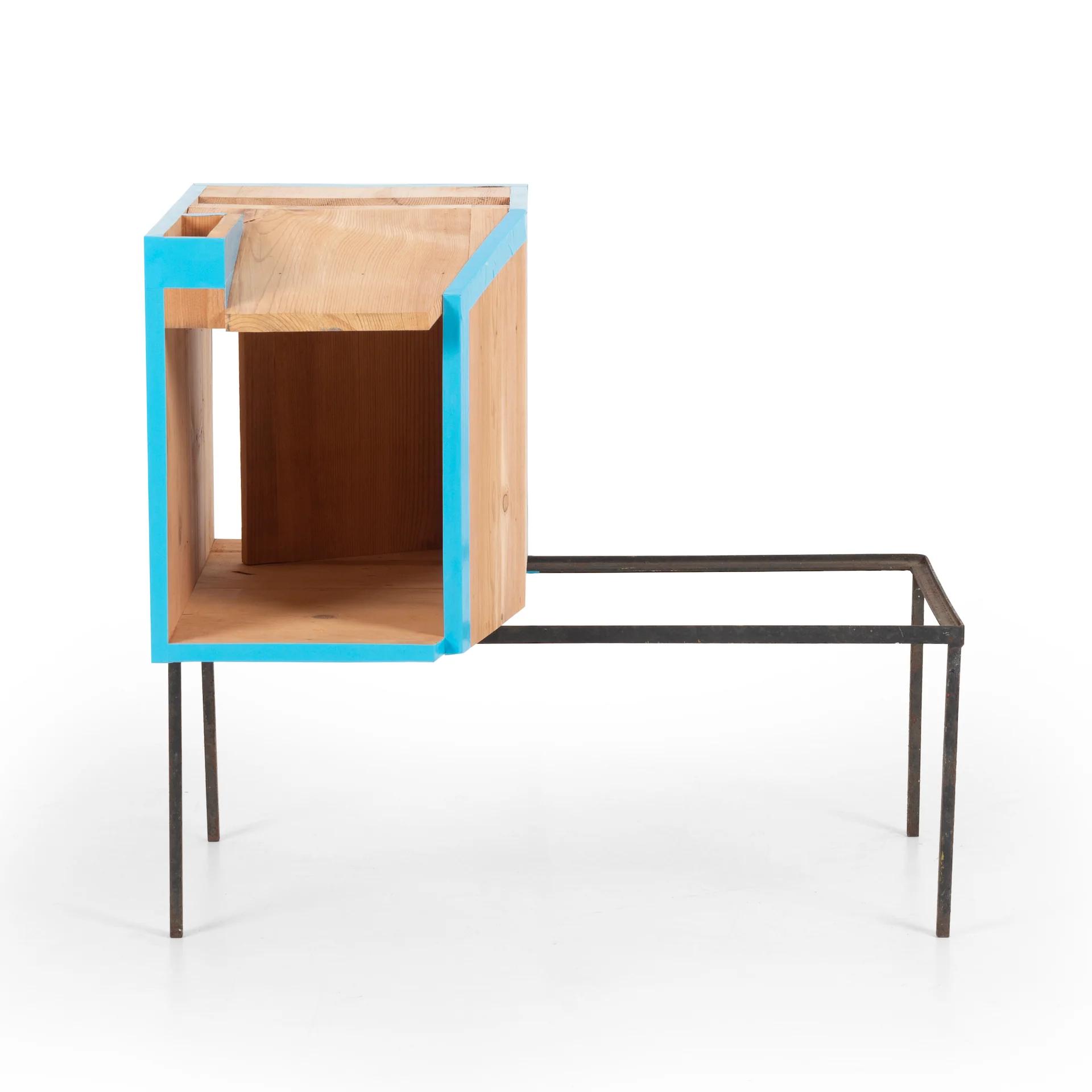
NORMAN TEAGUE/ STANZA 2, 2022, COLLAGED FROM FURNITURE FRAGMENTS FOUND IN THE SPIEGEL CATALOG BUILDING ON CHICAGO'S SOUTH SIDE
Photo © CONVERSO
Stanza 1, Stanza 2, and the Scrap Utopias, for example, are intuitively collaged forms that Teague created from table bases, magazine holders, and other discarded elements from the modernist-era Spiegel Building. The results feel at once inside and outside the modernist tradition, straddling the line between the functional and the sculptural while speculating on the “what ifs” of the white-washed past. “White America has designed Black American spaces, utensils, vehicles, and clothing, so what if we designed this world and how would that take shape?” Teague asks. He adds: “I believe there is a quest for craft from the imaginations of Black America that needs to be heard, seen, and felt as safe, desired, and beautiful. And it can only come from us. This turning point of awareness in American history will only get greater as time goes on—and design history will follow.”
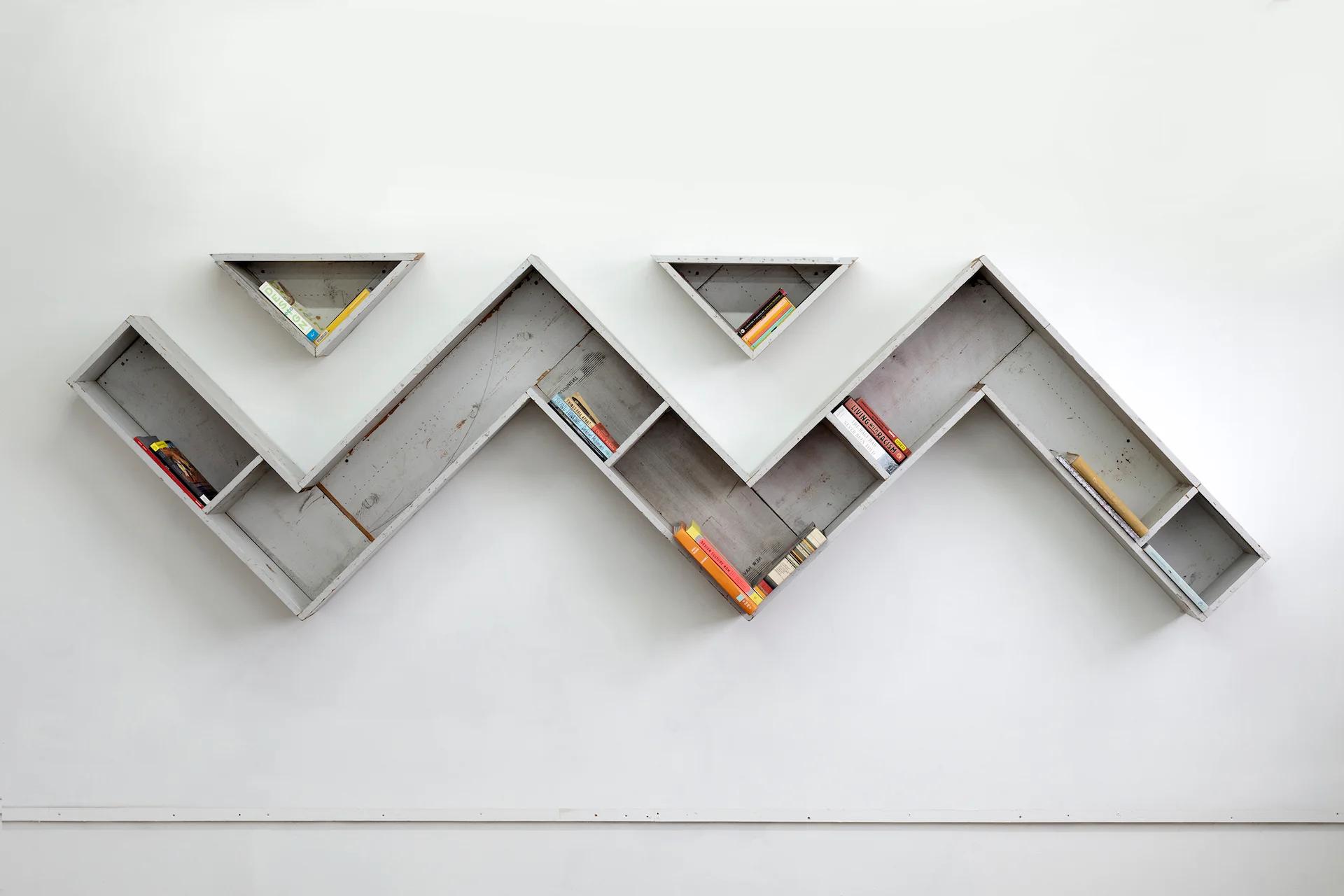
NORMAN TEAGUE/ ZIG ZAG BOOKSHELF, 2009
Photo © CONVERSO
Zig Zag Bookshelf by Norman Teague, 2009. The piece is inspired by an Adinkra symbol, Owo Foro Adobe, which means to do the impossible and to be persistent. It's made from fragments of foreclosed homes in the Bronzeville neighborhood of Chicago.
You’ll likely see more from Teague and his in-demand, eponymous studio soon. In addition to his work as a tenure-track assistant professor at the UIC School of Design, Teague is currently developing seating designs for MillerKnoll alongside an array of projects for the Barack Obama Presidential Center, Rebuild Foundation, and the newly announced Dorchester Industries Experimental Design Lab, a partnership between the Prada Group and Theaster Gates Studio. What’s more, his gallery in New York, R & Company, has secured coveted acquisitions for Teague’s work—such as his Sinmi Stools and Africana Rocking Chairs—at major institutions and private collections internationally. “Norman is a super busy guy at this point, with lots of irons in the fire,” Graham notes. “He’s juggling a lot of making in the studio with a slew of young geniuses.”

NORMAN TEAGUE/ MAKING CHANGE 1, 2022
Photo © CONVERSO
Making Change 1 by Norman Teague, 2022. Made of hemp, wood, and resin, the series references the tragic legacy of the War on Drugs, the inequities that pervade the new Pot Economy, and the dancers of Yorubaland.
Asked about his vision for design’s next generation, Teague spotlights the importance of community-focused “Social Design” practices. This approach, he says, is a “big deal,” because “the demand to listen to the people impacted by the work becomes essential to the design brief and deliverables. Students of industrial design, architecture, and urban planning are challenged to pay closer attention to user experience.” He adds: “I think that more crosscultural collabs allow us to take in more stories, opening our eyes to how much alike or different we are. How can we as humans grow from these intimate narratives?” ◆
Norman Teague: The Bureaus of Reconstruction is on view at CONVERSO in Chicago through July 31st.
